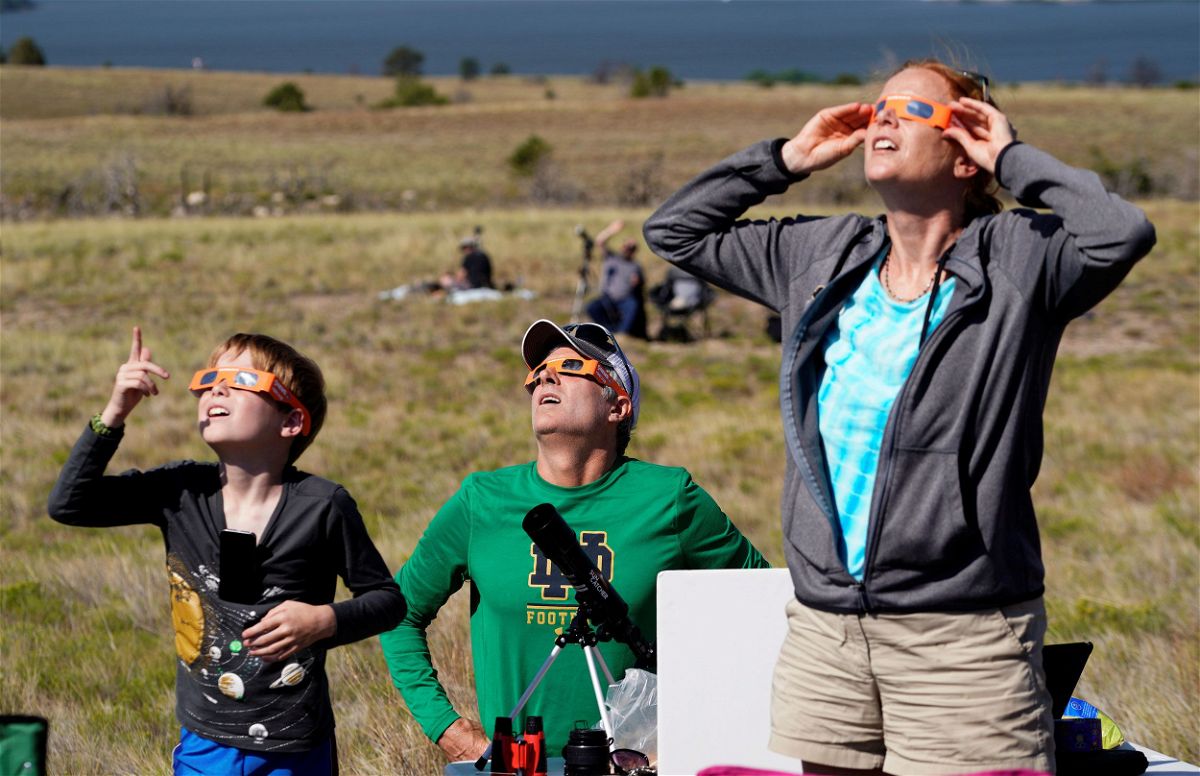The latest eclipse forecast is throwing a curveball at eclipse watchers

People watch the 2017 total solar eclipse in Guernsey
By Mary Gilbert, CNN Meteorologist
(CNN) — The highly anticipated total solar eclipse is fast-approaching, but Mother Nature is throwing some curveballs with the weather forecast.
The atmosphere looks poised to deliver an unfortunately timed lesson in the difference between day-to-day weather and long-term climatology for millions of people in the path of totality.
The current forecast shows pockets of disruptive cloud coverage in the path of totality and in some areas that are almost the complete opposite of what historical cloud cover data shows for April 8 – causing some that made advance plans to scramble to get in position for the best view.
Years of past cloud cover data pinpoint the Southern Plains as the region with the greatest chance for a cloud-free viewing experience on April 8, and the Northeast with one of the worst chances.
But high pressure and a largely cloud-free sky could shape up over the Northeast – especially New England – and create excellent viewing conditions for totality.
Meanwhile, a storm system driving a severe weather risk in the Southern Plains and Mississippi Valley could also send moist air from the Gulf of Mexico north into parts of the Tennessee and Ohio valleys. This could potentially lead to an increase in cloud cover in both regions and could obstruct totality views.
A cloudy forecast doesn’t mean one’s eclipse experience will be totally ruined. Even under a thick, overcast layer of clouds, the eclipse will turn day to night for several minutes in the path of totality. But if you can’t see the sun, you also might not be able to watch some special eclipse moments unfold from the ground.
The severe weather risk intersects with a significant portion of the path of totality in the South. Any clouds ahead of the storms could obscure the view for some, but storms are more likely to bring risks for post-eclipse travelers.
Totality, when the moon will entirely block the sun, will occur along a more than 100-mile-wide path from Texas to Maine, passing over cities like Dallas, Indianapolis, Cleveland and Buffalo, New York.
Parts of Texas – including Dallas – Oklahoma, Arkansas and Louisiana are at an increased risk of damaging thunderstorms on Monday, especially during the evening hours, according to the Storm Prediction Center. Damaging winds, hail, drenching rain and perhaps a tornado are all possible.
Severe thunderstorms typically rumble to life later in the afternoon in the southern US, after the daytime heat reaches its peak, usually driven by a largely cloud-free sky.
So the development of any violent storms could hold off just long enough for eclipse-watchers in the threat area to catch the phenomenon during its 1:30 to 2:00 p.m. CDT journey through the region.
Anyone stuck in post-eclipse traffic Monday afternoon or evening in northeastern Texas, southern Oklahoma, southern Arkansas and northern Louisiana could be at risk of damaging thunderstorms.
An estimated 20 million people in the US traveled to another city to view 2017’s total solar eclipse and there was a significant increase in traffic risks as a result, a recent study found. Millions more are expected to travel for Monday’s eclipse as the path of totality will be 40 to 50 miles wider than 2017’s path.
The-CNN-Wire
™ & © 2024 Cable News Network, Inc., a Warner Bros. Discovery Company. All rights reserved.